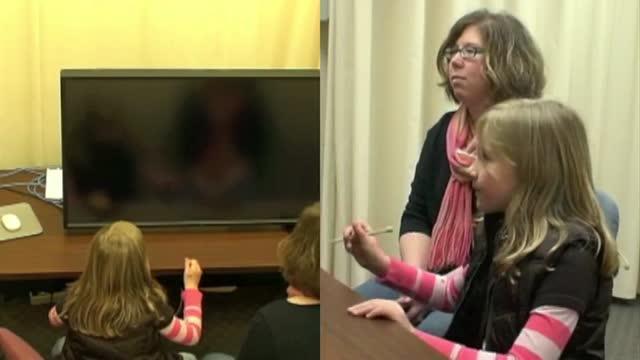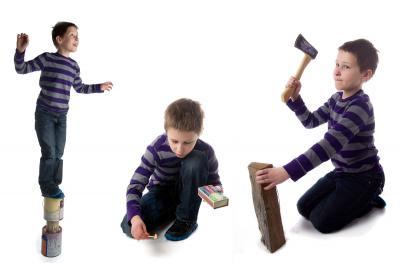So, how did they do that? That's where talking became important, Plumert notes. But not just any kind of talk, she adds.
"Saying to your child, 'Don't do that' or 'Stop' or 'Be careful' doesn't really work," Plumert says. "I mean, it's okay to say that, but the next step is to say why not. You shouldn't assume that your child knows why not, even if it seems obvious to you."
Mothers used one tactic especially effectively: They pointed out the dangerous elements in the situation, and explained how those current dangers could cause the child to get hurt. The researchers were initially surprised that mothers focused more on the present features rather than pointing out potential outcomes, but think it's because parents use the present – the danger – to help the child understand the potential outcome – getting injured.
Still, there are some children who are prone to injury, no matter what. These are the risk-takers, and the researchers learned that these children are more likely to view a situation as less dangerous than their peers.
"It's like these kids discount the danger in the situations," says Elizabeth O'Neal, a third-year graduate student in psychology and corresponding author on the paper. "I think, for them, there's always this competition between being cautious and having fun."
These children likely need more parental explanation to counteract their hell-bent-for-leather inclinations, the researchers say.
"In terms of intervention, the mother-child conversation might be especially important for these risk-takers than with the cautious kids," Plumert notes.
O'Neal and Plumert are the paper's sole authors. There was no outside funding for the research.

A mother and child discuss whether a scenario is dangerous, for a new study by the University of Iowa examining how parents can keep their children safe.
(Photo Credit: Courtesy of Plumert lab, University of Iowa)

University of Iowa psychology professor Jodie Plumert discusses her study how parents can help keep their children safe.
(Photo Credit: Ben Hill, University of Iowa)

Parents, do you cringe when you see your child in a precarious position? University of Iowa researchers, in a new study, learned how children rate hazards and show how mothers can better explain dangerous situations to children.
(Photo Credit: Tim Schoon, University of Iowa)
Source: University of Iowa